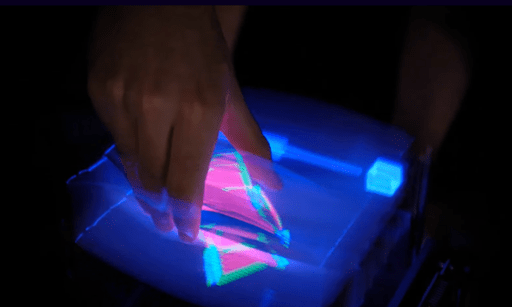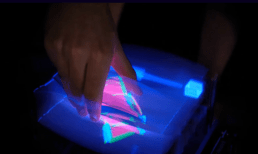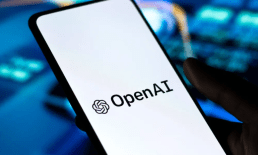Researchers Unveil 3D Tech That Lets Users ‘Touch’ Virtual Items

A research team in Spain has created a novel technology that will let users “touch” and “manipulate” virtual objects — potentially redefining how people shop online, analyze medical images and the like.
FlexiVol is a display system that lets users “reach” into 3D graphics and “manipulate” them by hand without needing special gear such as headsets or gloves, according to a paper by researchers from the Universidad Pública de Navarra in Pamplona, Spain.
It uses a volumetric display, which is an existing technology that lets users see 3D graphics without having to wear special glasses or headsets.
However, conventional volumetric displays use rigid optical diffusers, making it unsafe or impractical to insert a hand. Thus, a 3D mouse or keyboard are used for interaction.
FlexiVol’s innovation is to use a soft, elastic optical diffuser instead that lets users “insert” their hand and directly move the virtual object.
People already use their hands to move digital items on a hard screen: Think of dragging mobile apps to move them or rotating Google maps.
FlexiVol opens the door to a new class of touch interactions with digital objects — with applications from eCommerce to scientific modeling and engineering to education and medical simulation.
Today’s eCommerce retailers rely on flat images, videos, or 360-degree rotations to showcase products. But they want to offer more excitement.
For a short while, NFTs offered a novel way to showcase products, until the market for them collapsed. The U.S. Treasury Department also warned that NFTs are susceptible to theft and use in fraud and scams, adding another headache to retailers looking to offer better customer experiences.
Read more: How Web3 Can Raise Customer Engagement in Rewards Programs
How FlexiVol works
FlexiVol uses a type of display system that projects slices of a 3D object onto a fast-moving screen, creating the illusion of solid objects floating in midair. But instead of having a hard projection surface, FlexiVol uses strips of elastic fabric that can mold itself around a user’s hand.
That substitution means users can now directly touch, grab, rotate and move virtual 3D objects. Unlike flat touchscreens or augmented reality systems, the 3D visual and the hand exist in the same physical space.
The researchers tested FlexiVol with 18 volunteers. The group was given three tasks: touching red spheres as they appeared, guiding a ball along a circuit, and putting a white cube inside a red cube. They had to either use a 3D mouse or their hand.
The results: 89% of volunteers preferred using their hands because it felt “easier and more natural.” Most also said this was “fun.” While 6 out of 18 felt that using the 3D mouse made them more accurate, using their hands let them complete the task “significantly” faster.
The volunteers were a bit apprehensive at first about touching the virtual display — one even thought it would hurt — but they later said touching the display and 3D objects didn’t bother them. Most also described the sensation as “soft,” even “pleasant.” Two participants felt some tickles.
After the experiment, the volunteers said possible use cases include an online shopping simulator, 3D modeling, 3D sketches and painting, visualizing 3D plans, medical uses like surgery, video games and more.
Photo: Universidad Pública de Navarra’s UpnaLab YouTube video screenshot



